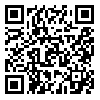Background and Objective: Today, child abuse has been raised as one of the social, health, and treatment priorities in various countries. The present study aimed to investigate the lived experience of mothers with a history of childhood abuse.
Research Methodology: The research method was qualitative and phenomenological. The statistical population of this study included mothers with a history of childhood abuse and children studying in elementary school in the 2023-2024 academic year in Isfahan. The research sample was selected using purposive sampling. The sample size was determined during the research. Sampling continued without any restrictions until saturation was reached; in other words, sampling continued until all levels of codes were completed and no new concepts requiring a new code or expansion of existing codes were obtained. After analyzing the data of twenty participants, theoretical saturation was obtained. A semi-structured interview was used to collect data. Analysis was conducted using the seven-step Claise coding method using MAXQDA software.
Findings: The results showed that the lived experience of mothers with a history of childhood abuse was classified into 5 main themes and 17 sub-themes. The main coded themes included disturbing feelings, problems in relationships with others, problems in relationships with children, negative image of the past, and negative self-image.
Conclusion: In summary, it can be said that chronic anxiety, fear of rejection, depression, and feelings of loneliness in mothers with a history of childhood abuse are a reflection of their emotional wounds from childhood. As a result, they experience insecurity, worry, and feelings of inadequacy in their relationships.
| Rights and permissions | |
 |
This work is licensed under a Creative Commons Attribution-NonCommercial 4.0 International License. |



